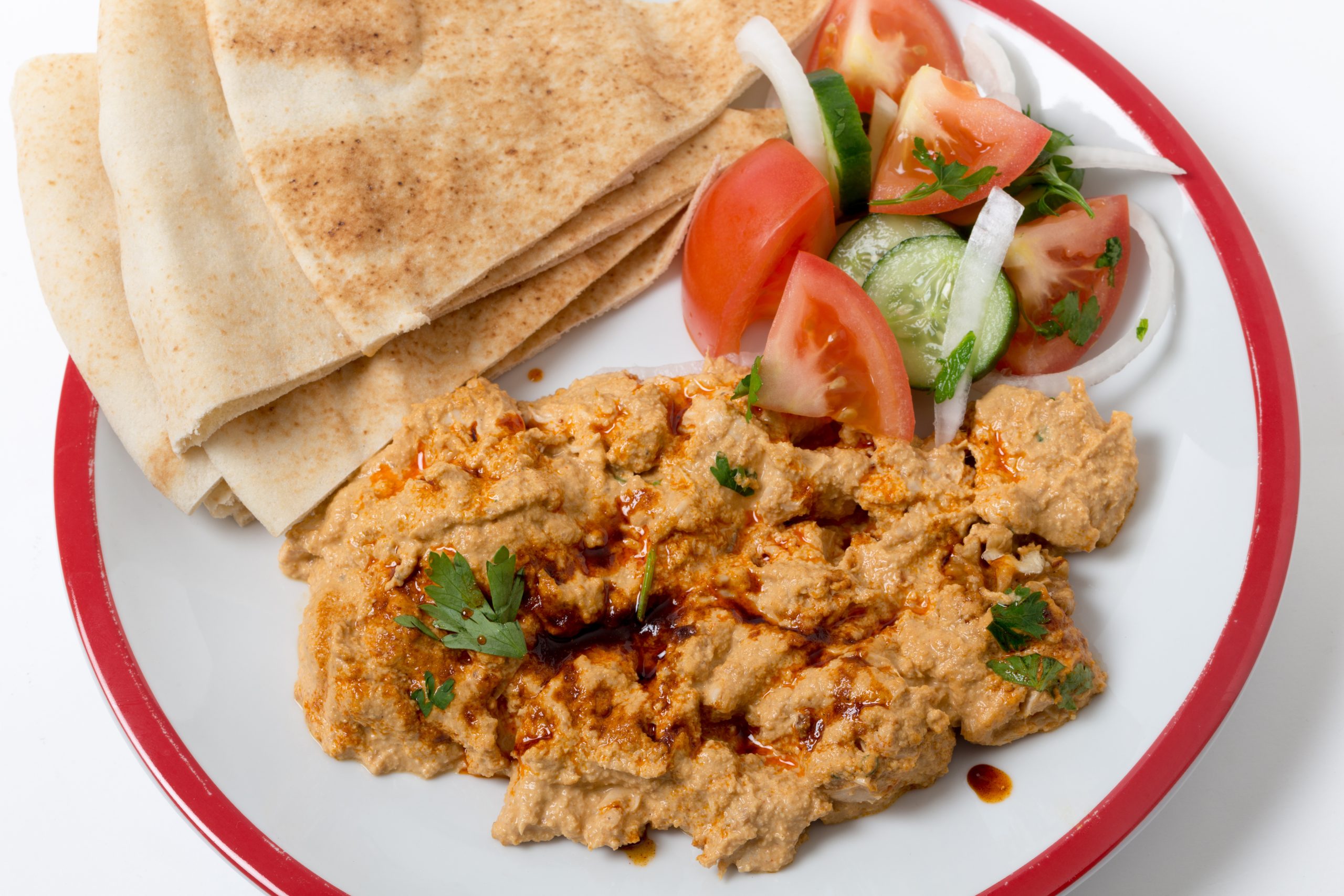We can never say it often enough: it is beneficial to eat a handful of nuts daily. The portion associated with the palm of your hand is already sufficient to ensure a good supply of protein, fiber and certain minerals such as magnesium, selenium and zinc. They also contain good fats which are important for absorbing certain nutrients and for many facets of health. Among other things, their richness in omega-3 and fiber provides a protective effect against cardiovascular diseases. Note that a recent study has even shown a 20% reduction in mortality, from all types of causes, for people who consume nuts every day (the food consumption of 120,000 people monitored for 9 years).
To present our culinary creation to you, we must say a few words about its provenance. During the reign of the Turkish Ottoman Empire, from 1299 to 1923, Circassian chicken was adopted as the imperial appetizer for the Sultans. Circassia was once the northern part of Caucasus. This territory extended from the Black Sea to the Caspian Sea, and even into the interior of western Russia. Our suggested recipe highlights walnuts. Wishing you all a good feast!
Ingredients:
– 1 pound or 3-4 boneless chicken breasts
– 4 cups of water or chicken broth
– 1 ½ teaspoons coarse salt or kosher salt
– 4 tablespoons of olive oil
– 4 teaspoons of paprika oil (as red as possible)
– 2 slices of whole wheat bread, crusts removed
– 1 ½ cups walnuts (halves or whole)
– The juice of a lemon
– 3 cloves of peeled garlic
– Salt and pepper
– 2 tablespoons green onions cut into rings
– 2 tablespoons chopped fresh parsley
Steps:
- Put your whole chicken breasts in a medium pot with the coarse salt. Pour the broth or water over the chicken, and bring to a boil over medium heat. The technique used is called poaching, which is why the water must be simmering at all times. This operation can take between 10 and 15 minutes, depending on the size of the breasts.
- Take a medium non-stick pan to prepare the paprika oil. Heat the oil and paprika together over medium-low heat until the oil is orange. Allow this oil to cool by removing it from the heat. There is no doubt that you will have about 10 to 12 minutes left of cooking your chicken. Once the white meat is well cooked, remove it from the broth, then shred using one or two forks. These will be very hot, but will come off the bone perfectly.
- Carefully remove the crusts from your bread slices. Take a small glass bowl, then put a ladle of broth in it to soak the bread. During this time, cut the green onions, the parsley, then refrigerate to keep cool. Extract the lemon juice, taking care to remove the seeds and the pulp.
- Use a food processor or blender to make the nut sauce. In your blender/food processor, put the walnuts, garlic, parsley (reserved in refrigerator from earlier), the bread soaked with one or two cups of broth. Pulse until you get a thick paste, but not too much. If your sauce is too frozen, add a little more broth. Note that this nut sauce must be thick, but still malleable and creamy.
- When the walnut sauce is finished, pour it into a large mixing bowl. Add the paprika oil, gently stirring the mixture with a spatula. Season with salt and pepper and sprinkle with lemon to taste. Take the shredded chicken, the green onions, the remaining parsley (or freshly chopped), then add them to the sauce, mixing well. Serve immediately or let allow to cool down for one or two hours in the refrigerator. This decision will remain in your hands my friends!
- Whether your salad is refrigerated or not, put it on a medium serving plate. You can decorate it with some walnuts and parsley leaves if you have some left. This creative chicken salad can serve as an original appetizer. Especially since the latter could be served in a delicious whole wheat bread, as a sandwich, with grapes and slices of cheese. In addition to being your new sandwich ally, it will be nothing short of an elegant appetizer with whole wheat crackers. Wishing you all a good feast!
References :
- Marion Tharrey, François Mariotti, Andrew Mashchak, Pierre Barbillon, Maud Delattre, Gary E Fraser, 2018. Patterns of plant and animal protein intake are strongly associated with cardiovascular mortality: the Adventist Health Study-2 cohort. International Journal of Epidemiology, Volume 47, Issue 5, October 2018, Pages 1603–1612.
- Piet A. van den Brandt, Leo J. Schouten, 2015. Relationship of tree nut, peanut, and peanut butter intake with total and cause-specific mortality: a cohort study and meta-analysis. International Journal of Epidemiology. 2015 Jun;44(3):1038-49.






